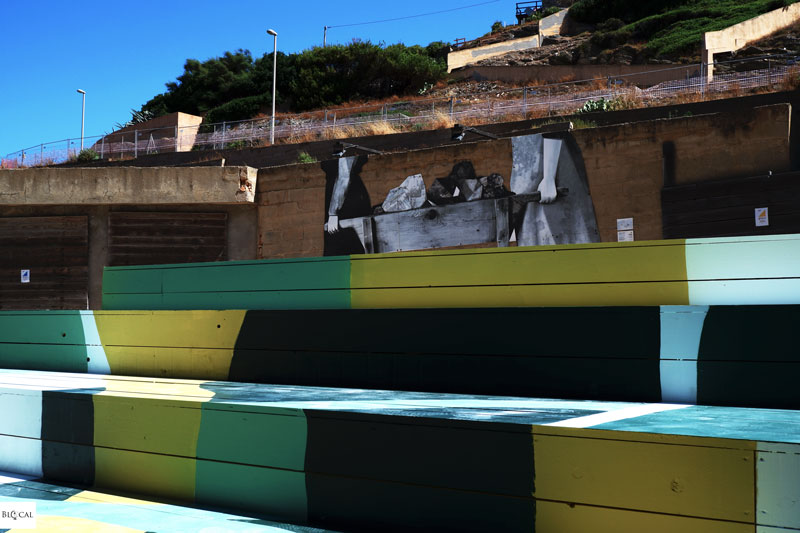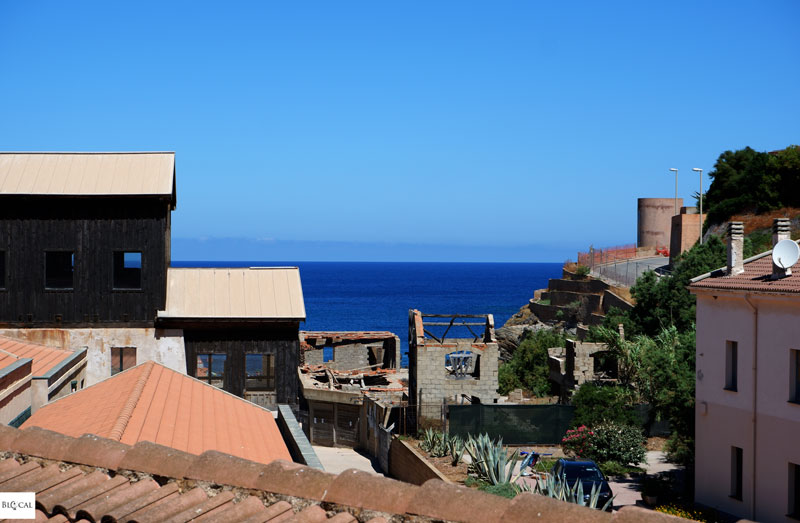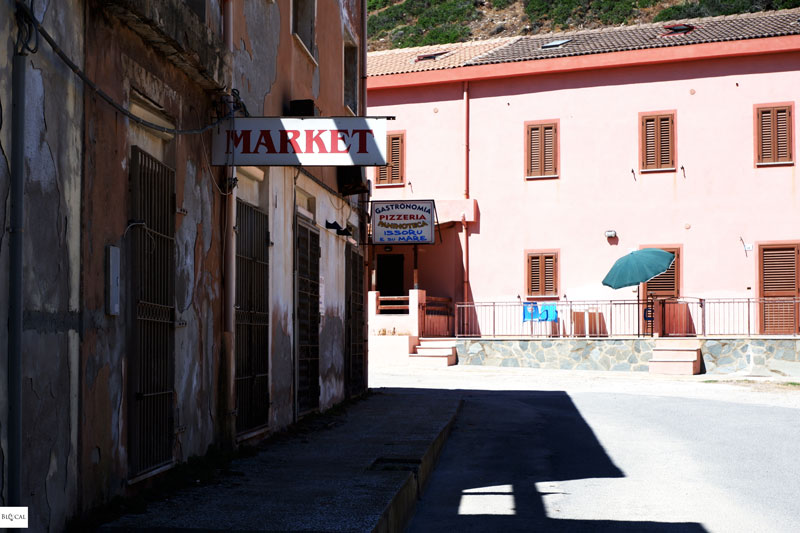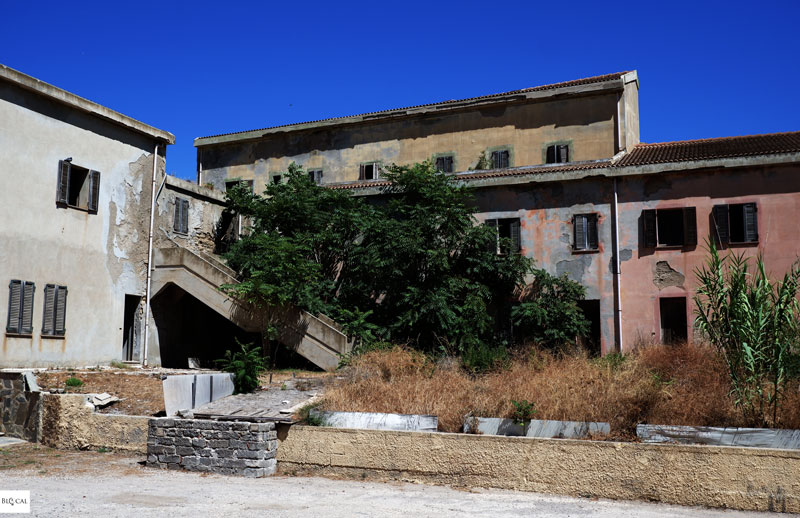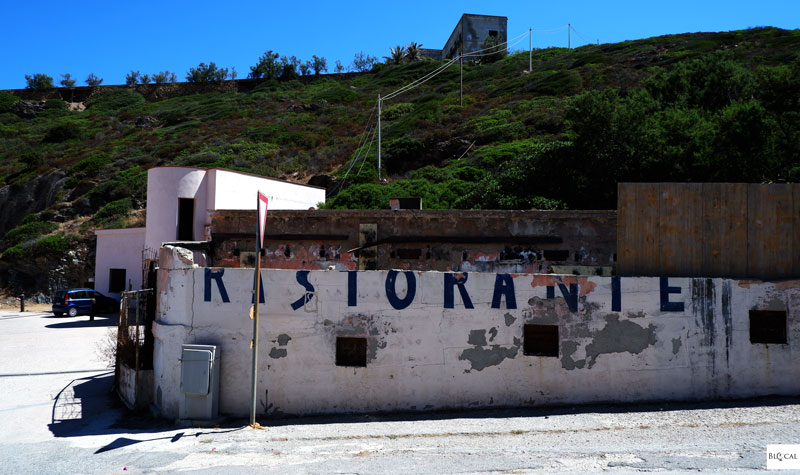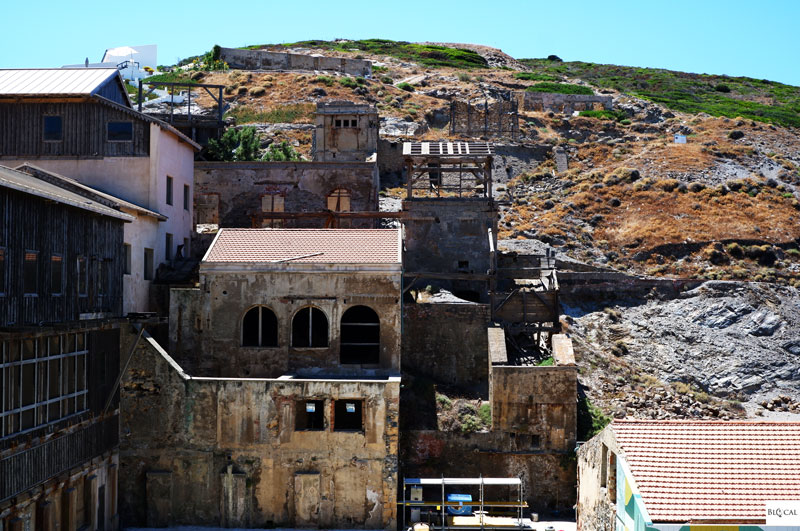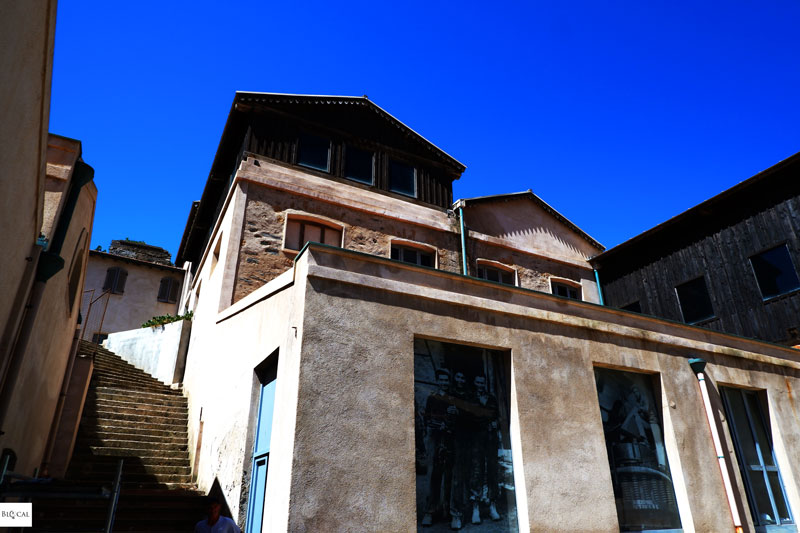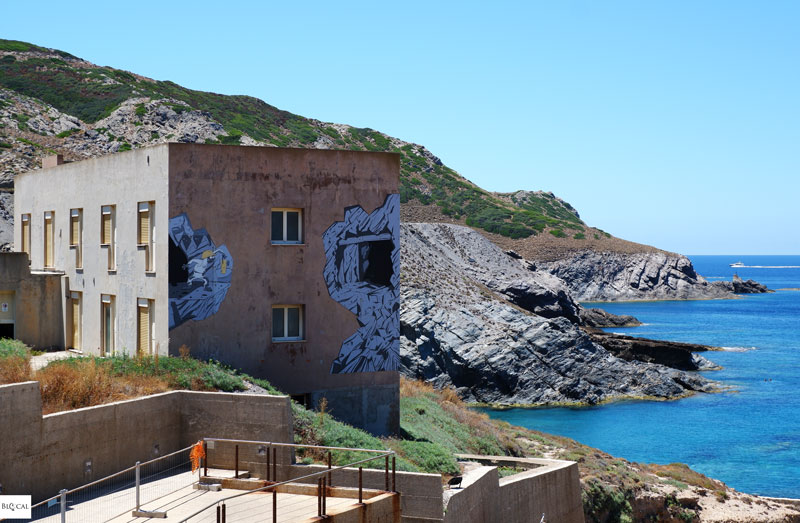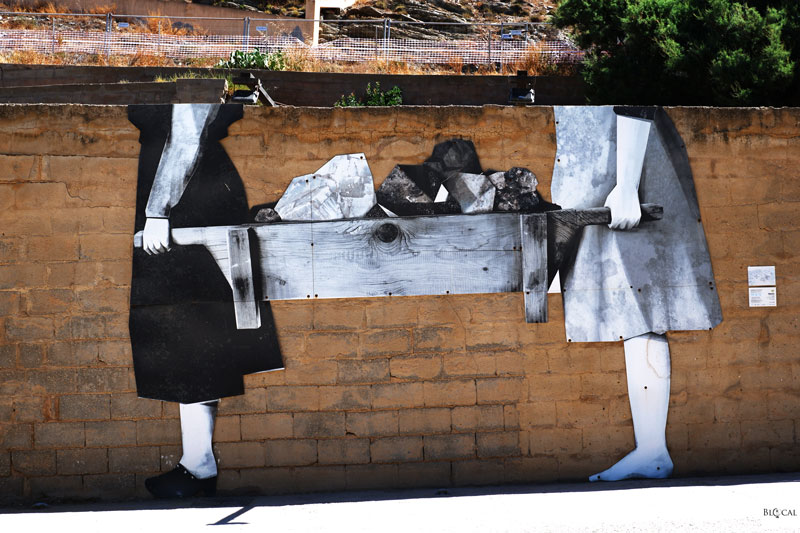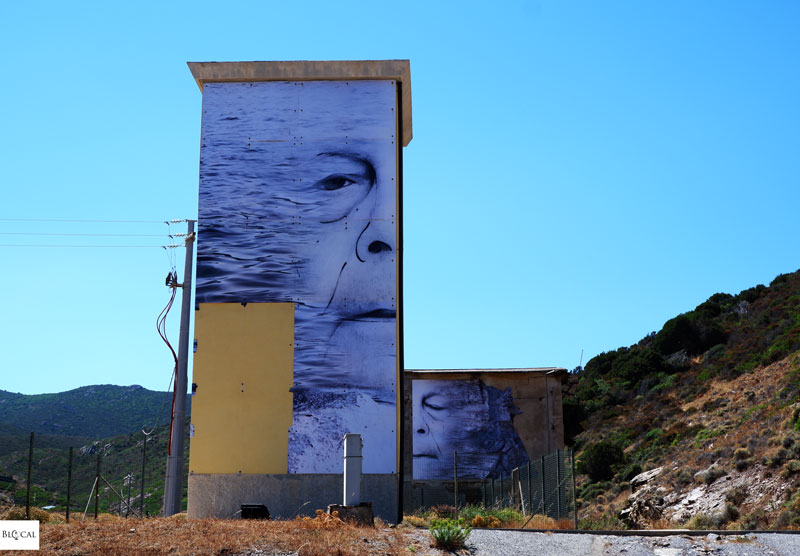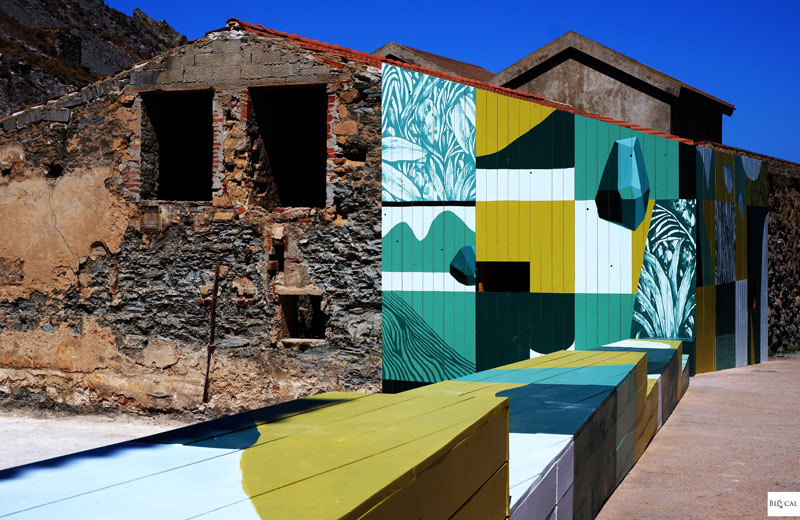Among my favorite hidden gems in Italy is this secret place in Sardinia that mixes the two things I love to see when I travel: industrial archaeology and urban art.
Industrial archaeology in Sardinia: the Argentiera mining site
The Argentiera is a former argentiferous mine exploited since Roman times and closed down in 1963. The 19th-century mining village has been abandoned ever since: in this silent ghost town in the north-eastern extremity of Sardinia, I found abandoned houses, vintage signs rusting above shut-down shops, and a restaurant that had kept working after the closure of the mining site, only to be destroyed by a dramatic arson later.
On the former dock, a few people were enjoying the pristine water of Argentiera Cove. The secret beach next to the Argentiera abandoned mine never gets too crowded, despite its tiny size. Probably the best memory from my holiday in Sardinia is that of the moment I got into Argentiera’s water, which sparkles with silvery reflections caused by the composition of the sand (a mix of gravel and mineral dust).
The landmark of this stunning mining landscape is the former washery, made of wood, and a series of derelict engine houses.
Sardinia is one of the regions of Italy with the highest number of mining concessions (over 600). It goes without saying that industrial archaeology in Sardinia (particularly mining archaeology) is dreamy. Sardinian industrial heritage has received UNESCO recognition, and the island understood the potential of industrial archaeology better than other Italian regions, eventually establishing the first geomineral park in the world.
Exploring the history of the Argentiera mining site through art
The Argentiera, just one of the abandoned mining sites included in Sardinia’s Geomining Park (Parco Geominerario della Sardegna), has been recently put on people’s radar thanks to a series of cultural events aimed at making the place accessible for locals and visitors alike.
Since 2017, the former mining site has been home to Landworks, the organization entrusted with the redevelopment project. They chose to carry on the renovation through restoration workshops and art by establishing, in 2019, the MAR Museum (MAR-Miniera Argentiera) with the ambitious goal of engaging visitors with art, architecture, and the beautiful mining landscape of the area.
Since then, a series of site-specific artworks have been created, including an augmented reality project exploring the history of the Argentiera mining site (2019) and a stunning staircase painted by Sardinian street artist Tellas (2022).
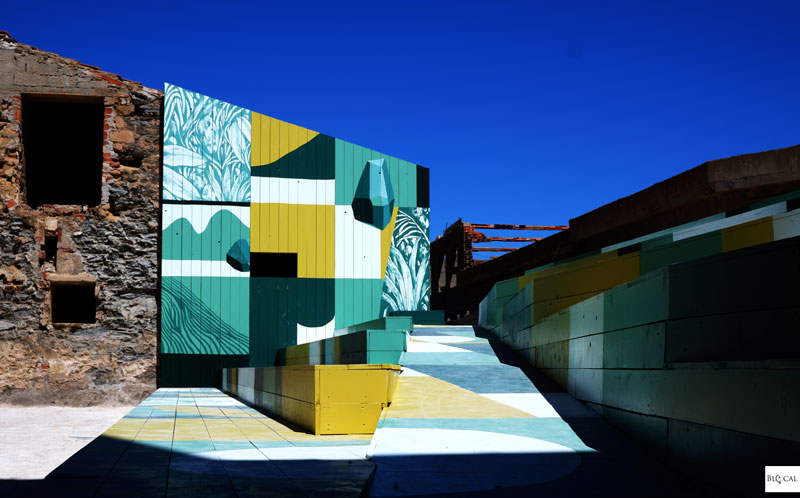
Tellas’ street art decorates the amphitheater created in the shadow of the former washery to host concerts, open-air movie nights, and more summer events.
The second life of the Argentiera mining site has just begun. Many buildings were fenced off when I visited, and I could hear all the cutting and drilling. The paint of Tellas’ artwork was still fresh, and the summer event program was about to kick off. I’m very curious to see how this place will transform in the coming years, especially how it will shape its new identity while, at the same time, staying rooted in the suggestive history of the place.
